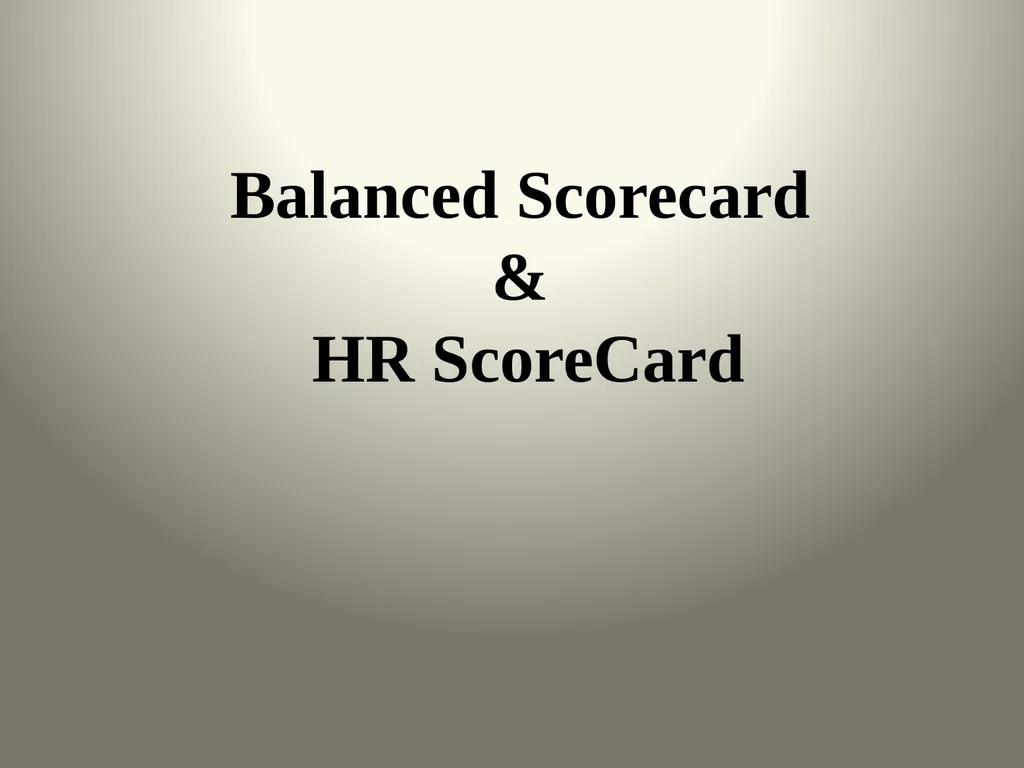Balanced Scorecard & HR ScoreCard Balanced Score
Author : myesha-ticknor | Published Date : 2025-06-23
Description: Balanced Scorecard HR ScoreCard Balanced Score Card The Balanced Scorecard is a Strategic Planning and Management System that is used in business industry government and nonprofit organizations worldwide to align business activities
Presentation Embed Code
Download Presentation
Download
Presentation The PPT/PDF document
"Balanced Scorecard & HR ScoreCard Balanced Score" is the property of its rightful owner.
Permission is granted to download and print the materials on this website for personal, non-commercial use only,
and to display it on your personal computer provided you do not modify the materials and that you retain all
copyright notices contained in the materials. By downloading content from our website, you accept the terms of
this agreement.
Transcript:Balanced Scorecard & HR ScoreCard Balanced Score:
Balanced Scorecard & HR ScoreCard Balanced Score Card The Balanced Scorecard is a Strategic Planning and Management System that is used in business & industry, government, and nonprofit organizations worldwide to align business activities to the vision and strategy of the organization. It was originated by Drs. Robert Kaplan and David Norton as a performance measurement framework that added strategic non-financial performance measures to traditional financial metrics to give managers and executives a more 'balanced' view of organizational performance. Cntd. The Balanced Scorecard was found to be the sixth most widely used management tool across the globe which also had one of the highest overall satisfaction ratings. In its simplest form the Balanced Scorecard breaks performance monitoring into four interconnected perspectives: Financial, Customer, Internal Processes and Learning & Growth. Balanced Scorecard Perspectives The Financial Perspective covers the financial objectives of an organisation and allows managers to track financial success and shareholder value The Customer Perspective covers the customer objectives such as customer satisfaction, market share goals as well as product and service attributes. The Internal Process Perspective covers internal operational goals and outlines the key processes necessary to deliver the customer objectives. The Learning and Growth Perspective covers the intangible drivers of future success such as human capital, organisational capital and information capital including skills, training, organisational culture, leadership, systems and databases. Designing of BSC This is illustrated well by the four steps required to design a balanced scorecard: Translating the vision into operational goals; Communicating the vision and link it to individual performance Business planning Feedback and learning, and adjusting the strategy accordingly. Considerations To embark on the Balanced Scorecard path an organization first must know (and understand) the following: The company's mission statement The company's strategic plan/vision The financial status of the organization How the organization is currently structured and operating The level of expertise of their employees Customer satisfaction level Balanced Scorecard implementation Implementing the Balanced Scorecard system company-wide should be the key to the successful realisation of the strategic plan/vision. A Balanced Scorecard should result in: Improved processes Motivated/educated employees Enhanced information systems Monitored progress Greater customer satisfaction Increased financial usage How many companies use the Balanced Scorecard? More than half of major companies in the US, Europe and Asia are using Balanced Scorecard approaches. Balanced Scorecard is one of the top-ten most widely used management tools around the world. The widest use of the BSC














